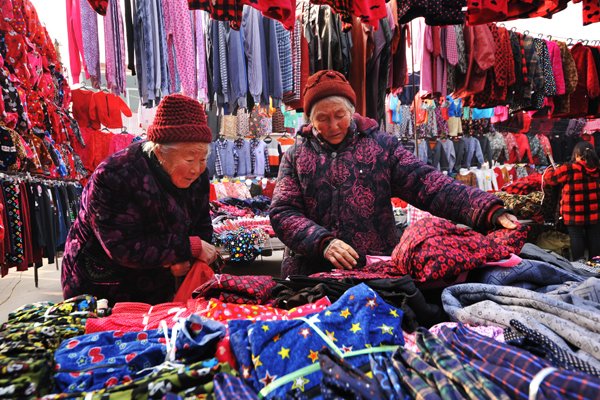
Farmers look at clothes at a market in Zaozhuang city's Shanting district, in East China's Shandong province, before the Spring Festival.Li Zongxian / For China Daily
As she admired her tableware collection, Gao Shumei picked up one of the bowls and traced her fingers over the Chinese character fu, meaning good fortune, which was printed upon it.
"I buy new bowls and chopsticks every year for Chinese New Year. It is said that new tableware will bring bliss and longevity to the family," said the 75-year-old.
Gao lives in a remote village on the Loess Plateau in Gansu province. This year her granddaughter bought the family's new tableware online. It was chosen and ordered in minutes, but it has not always been so easy.
Just three decades ago, bartering was a much more common practice, Gao said.
In the late 1970s, when few Chinese traveled extensively, villagers had to wait for traveling vendors, who would hawk their goods from village to village and often walk for miles in between.
Each salesman would make their own sound, usually using a bell or a whistle, to alert the village to what they were selling.
"I still get excited when I hear a rattle drum. I catch myself, even now, glancing at the window expecting to see the peddler arriving," Gao recalled.
One year, she swapped a bag of grain grown on her family lot for a pair of blue-striped porcelain bowls. These bowls, however, were not meant for the annual reunion dinner.


















































